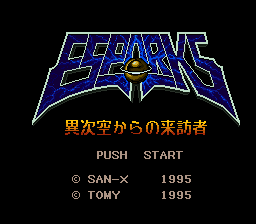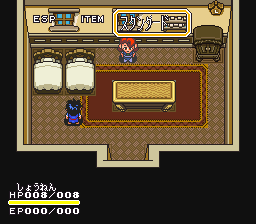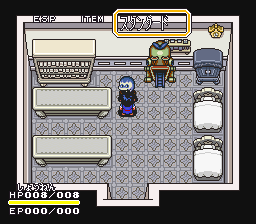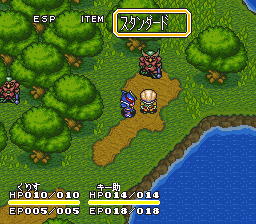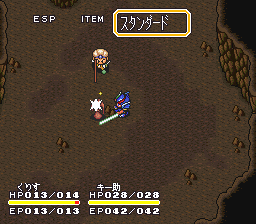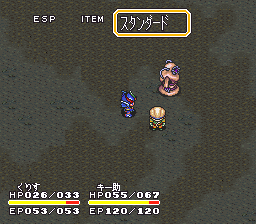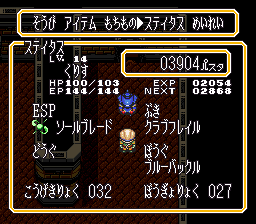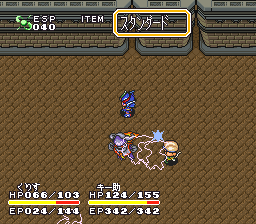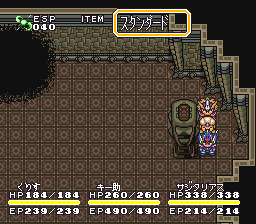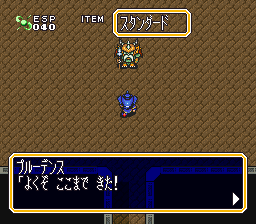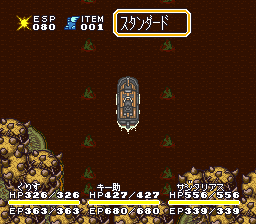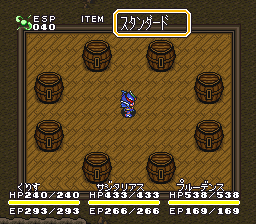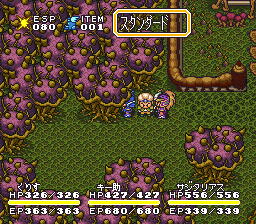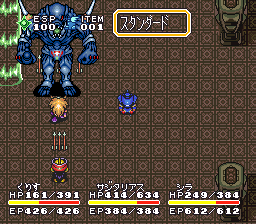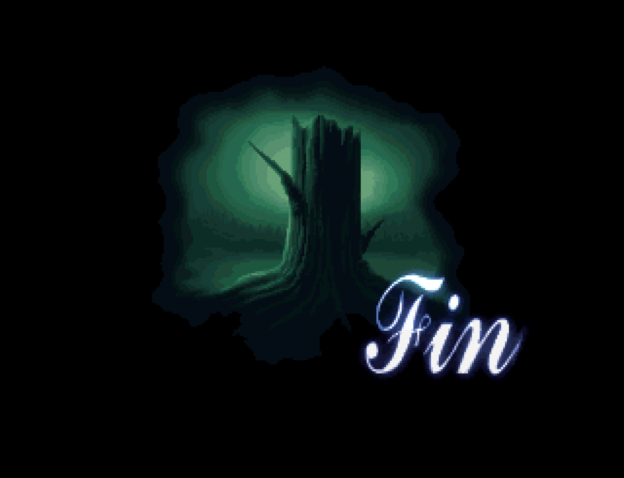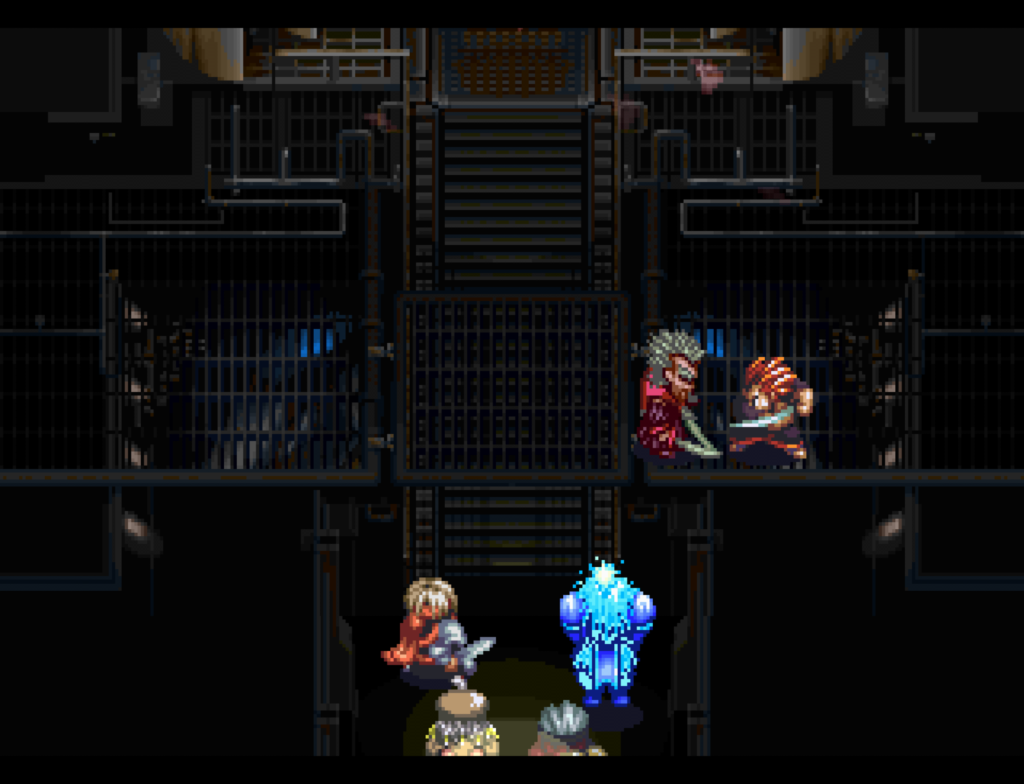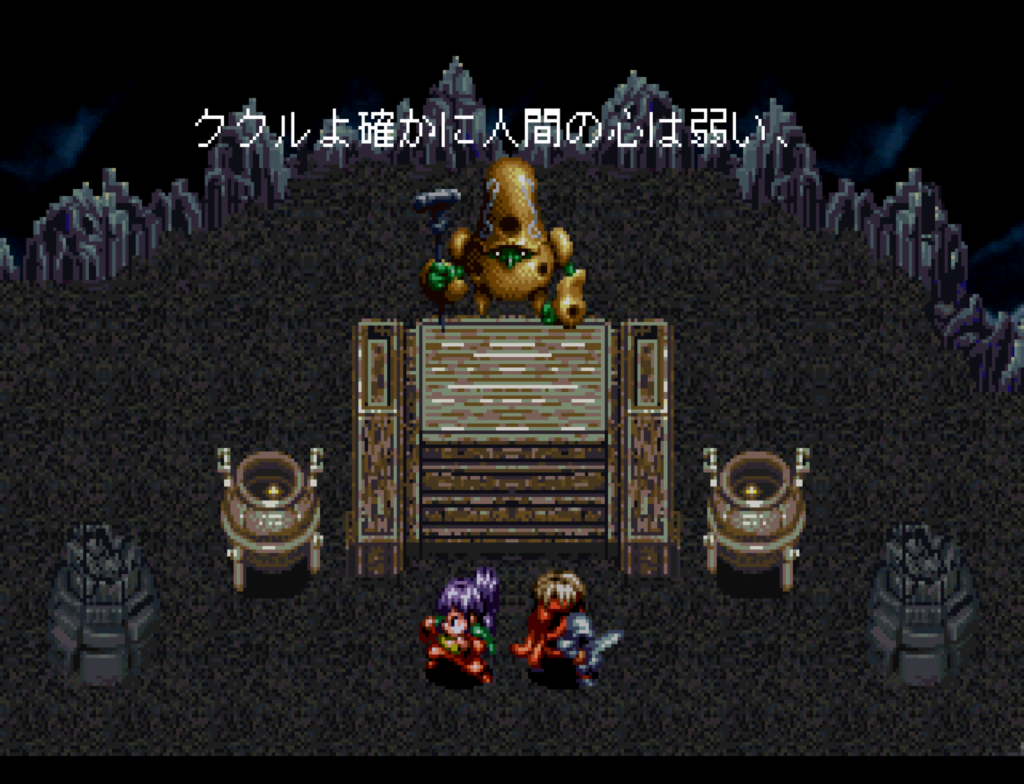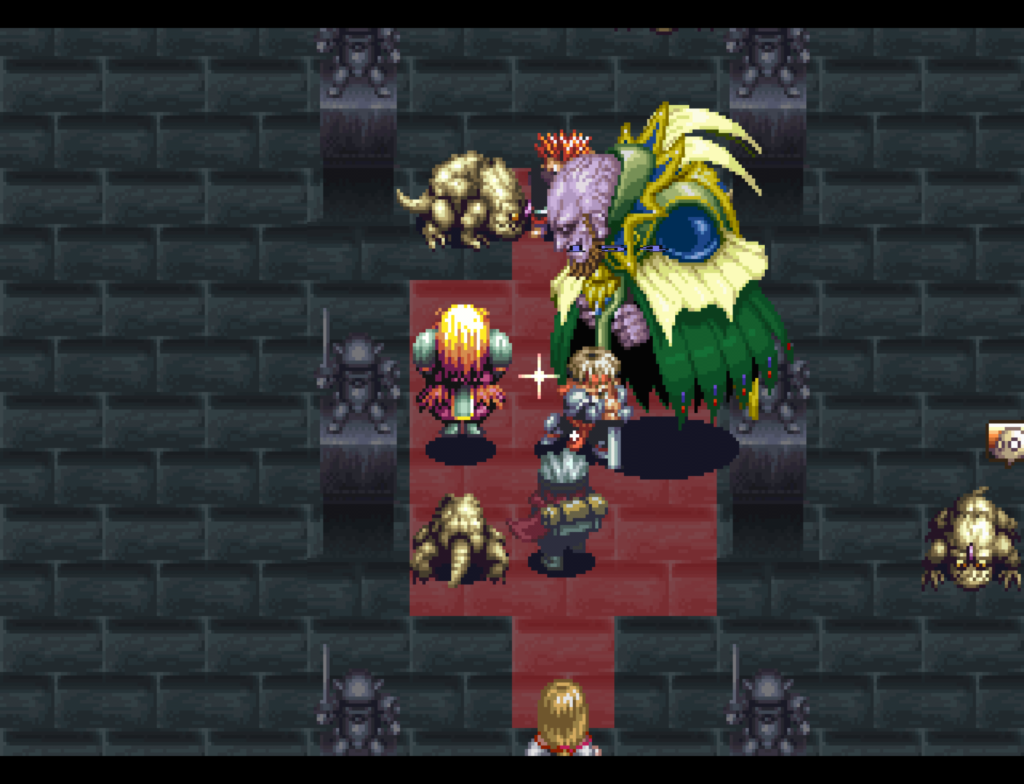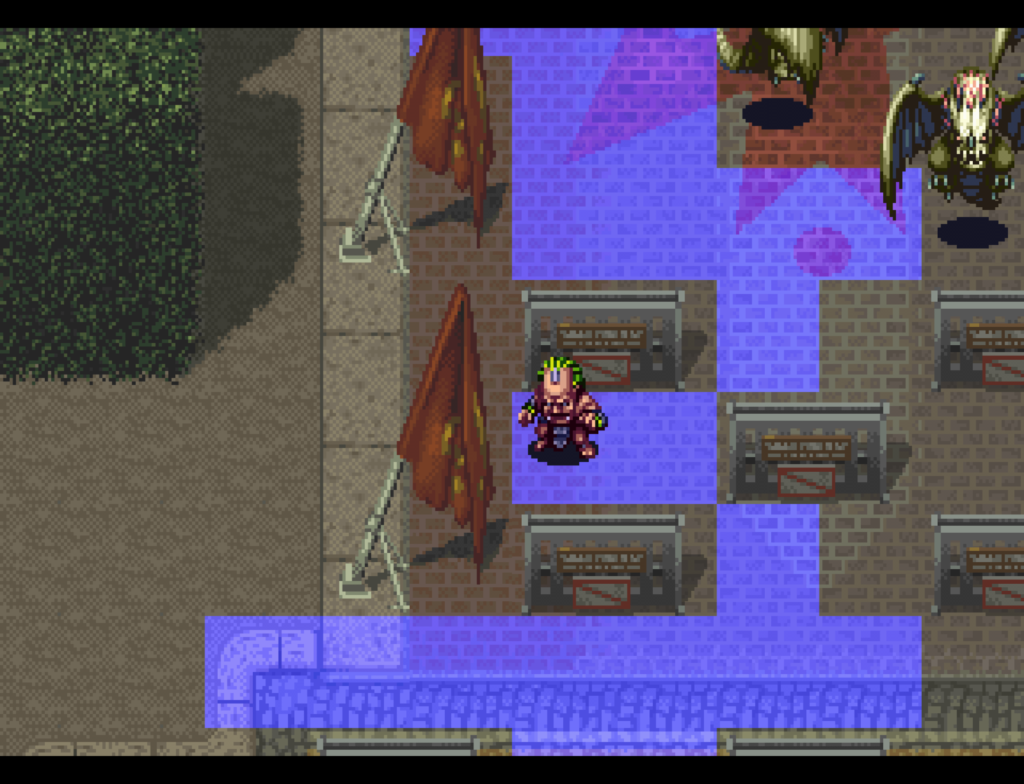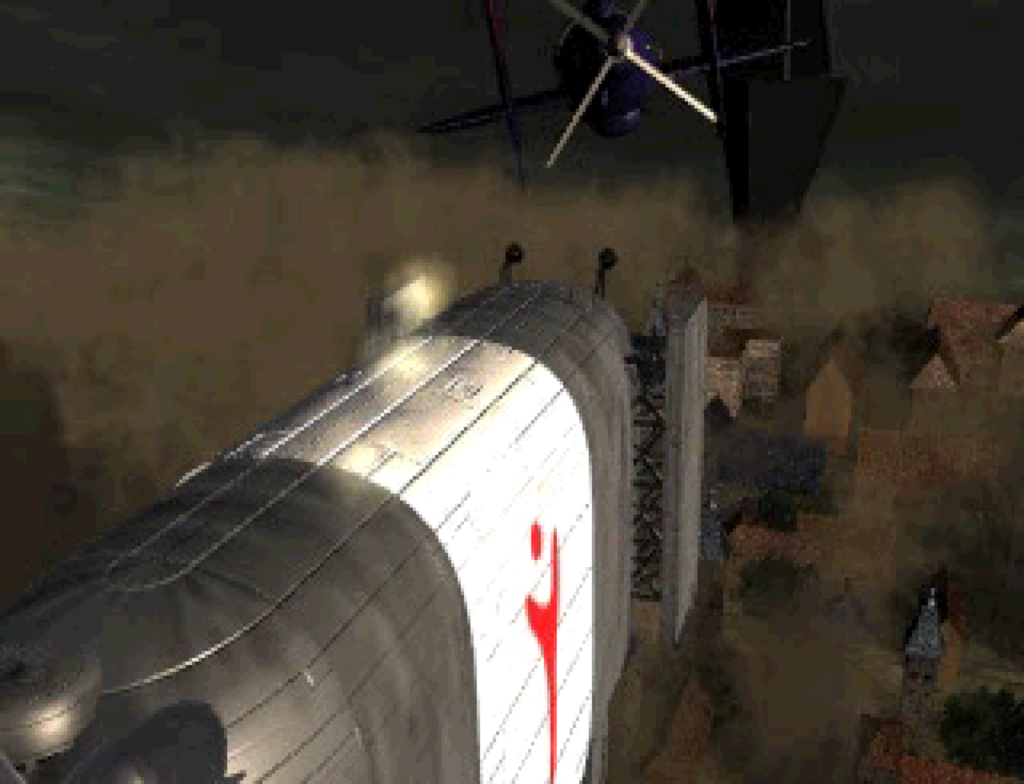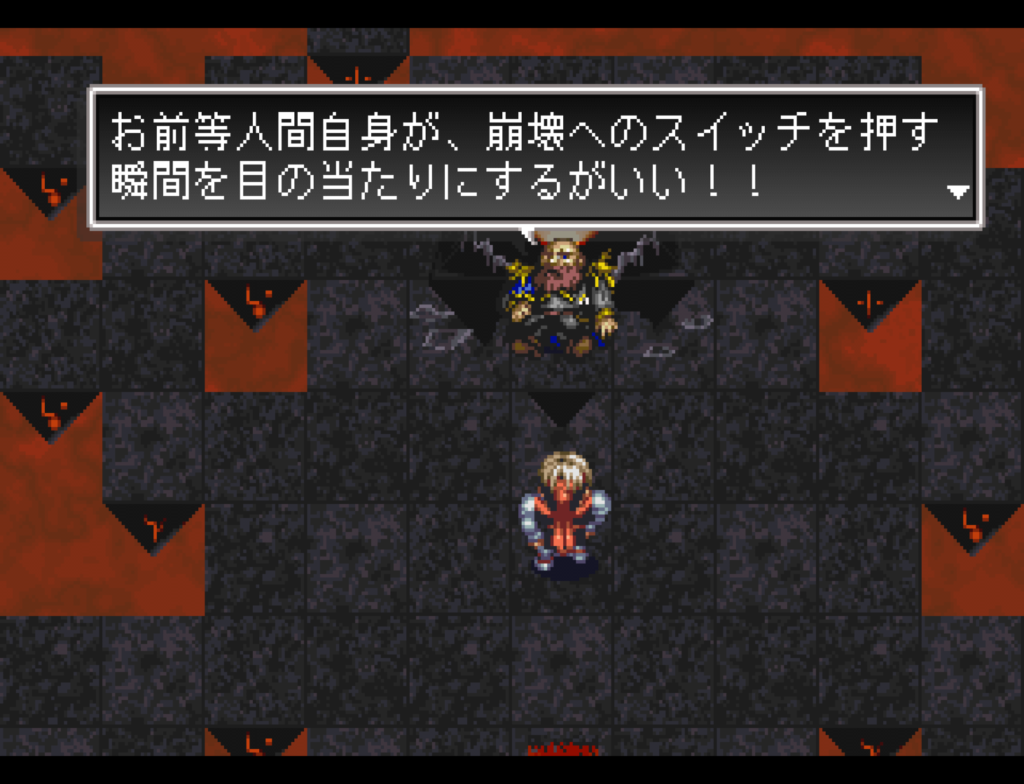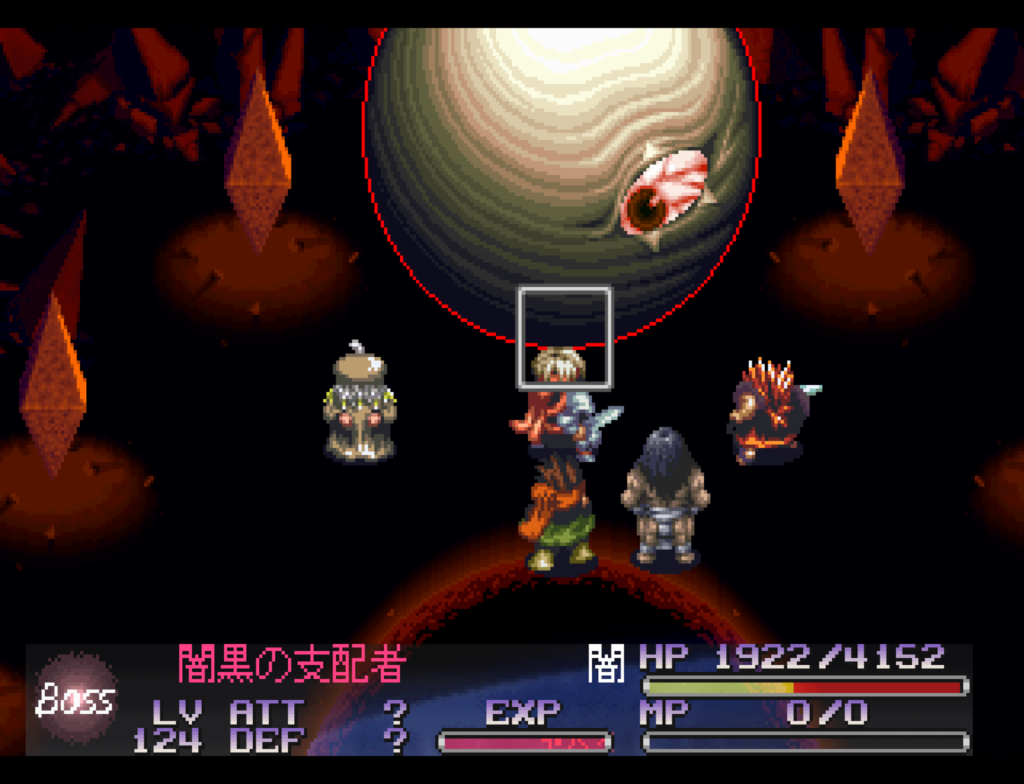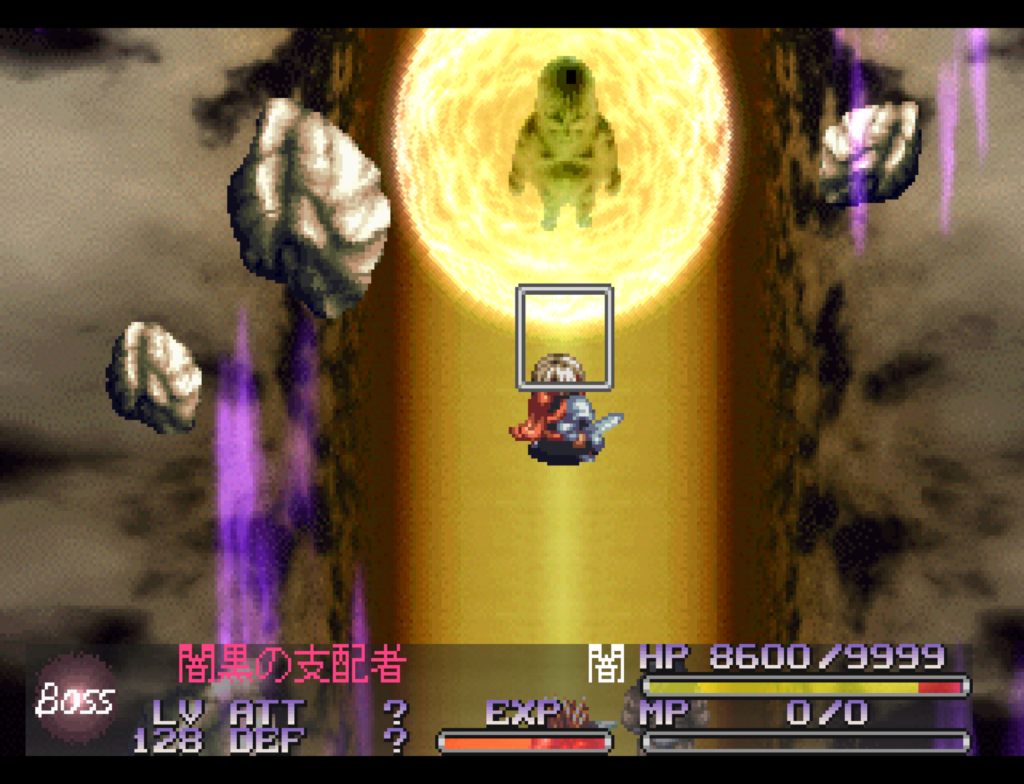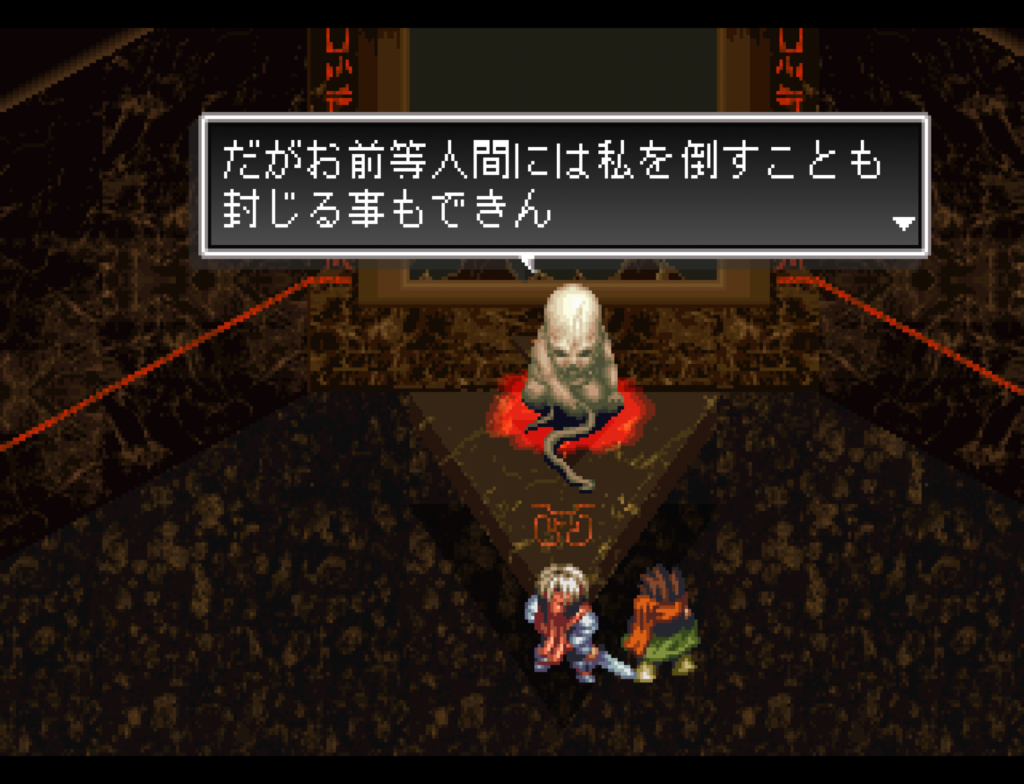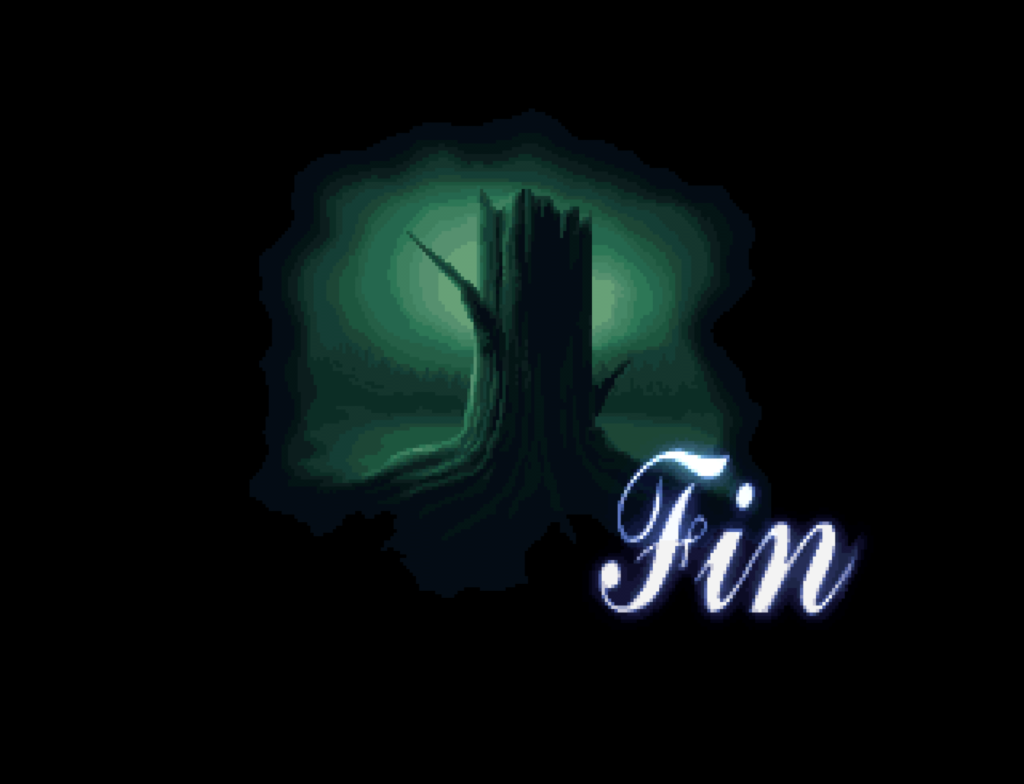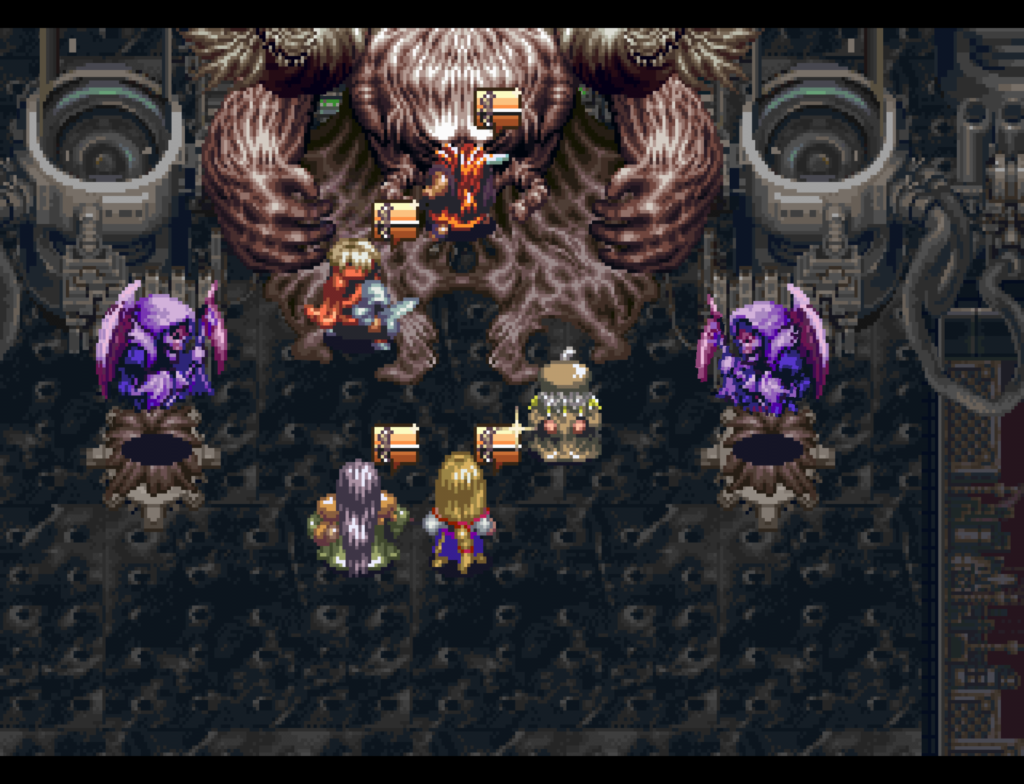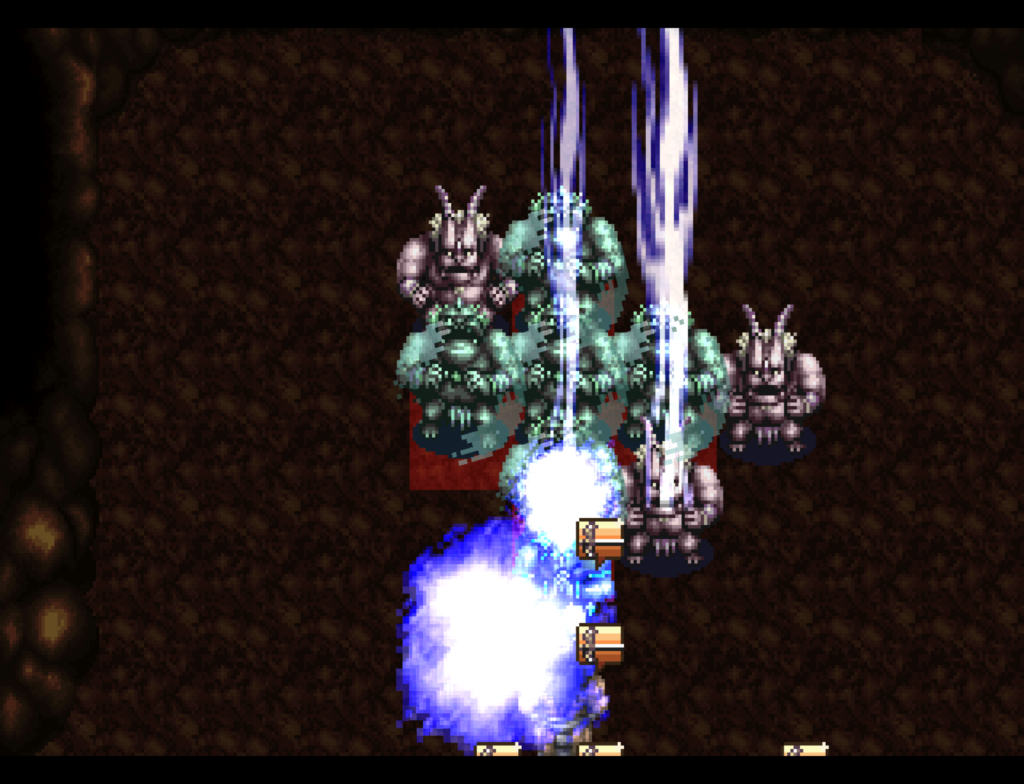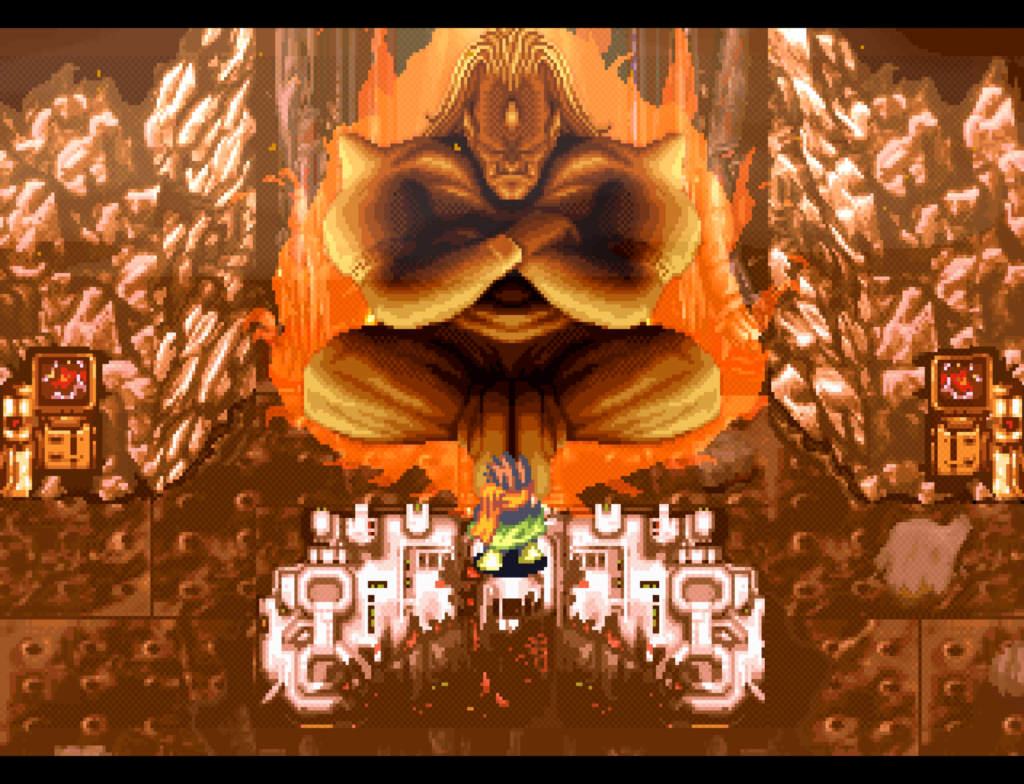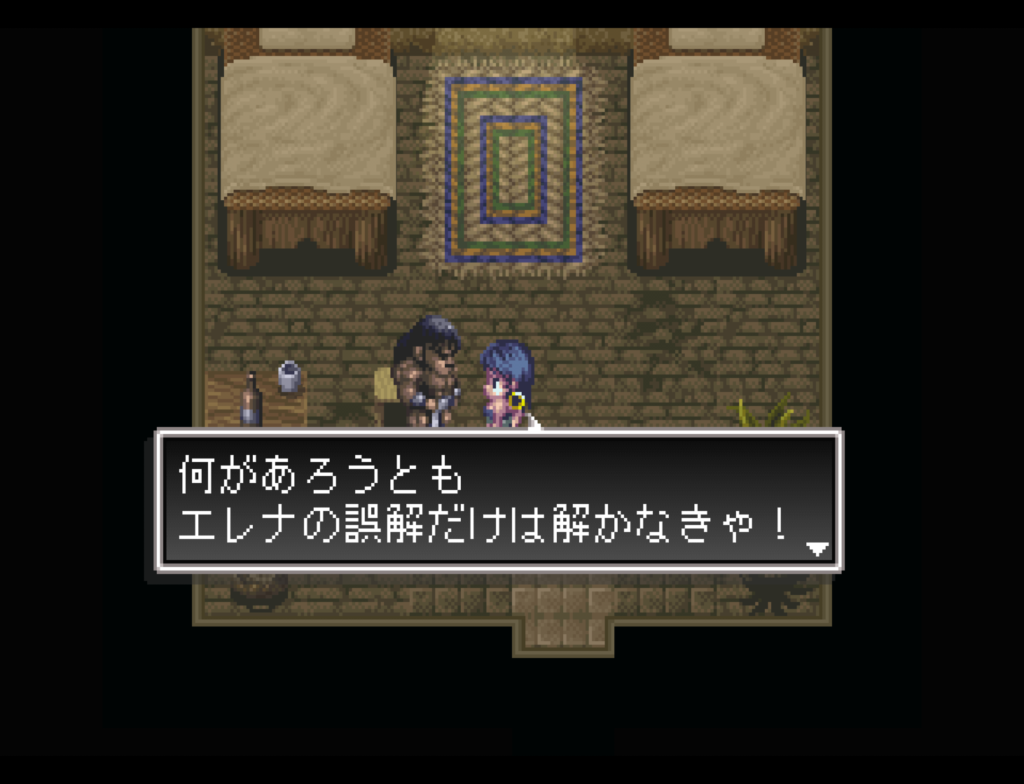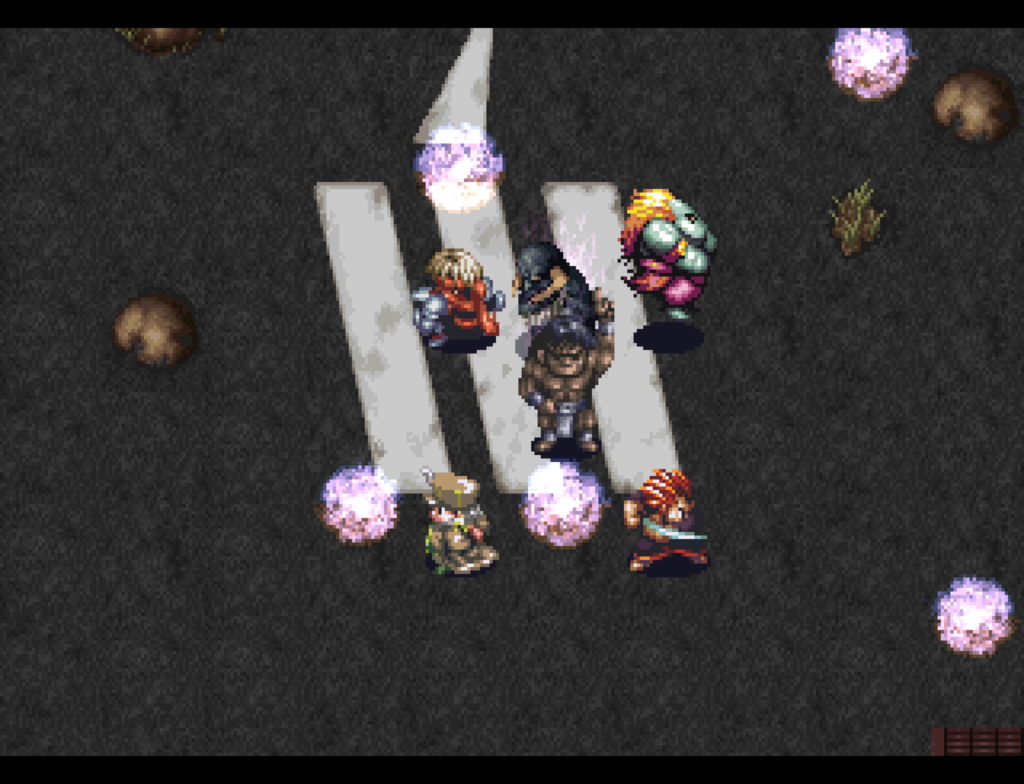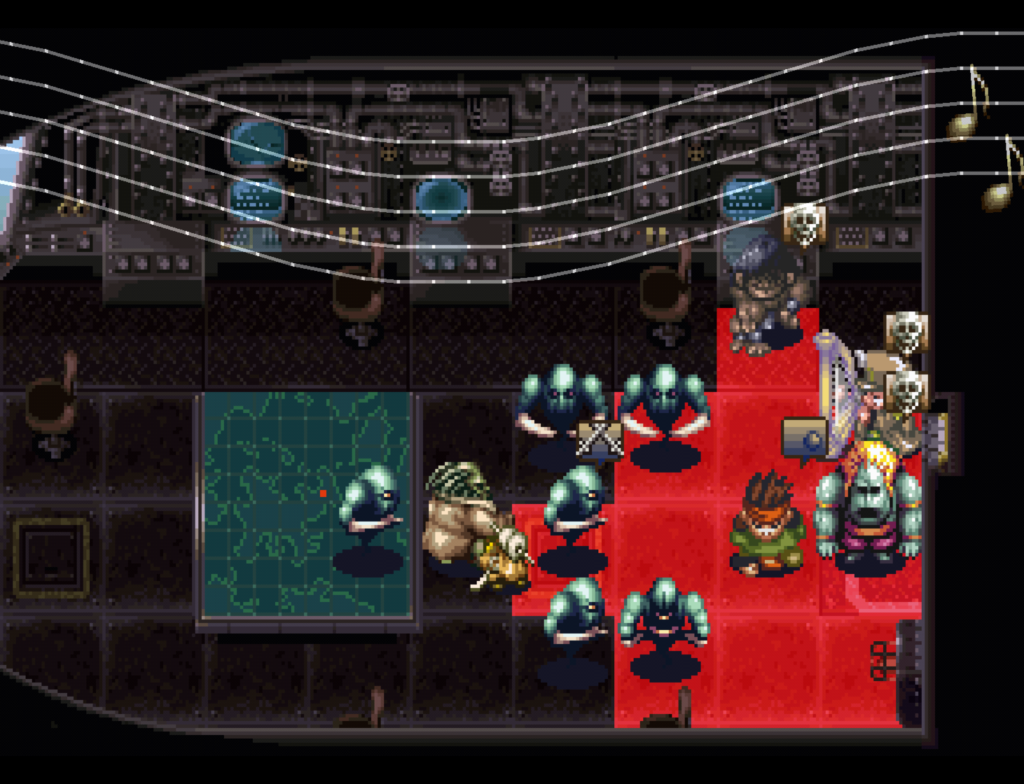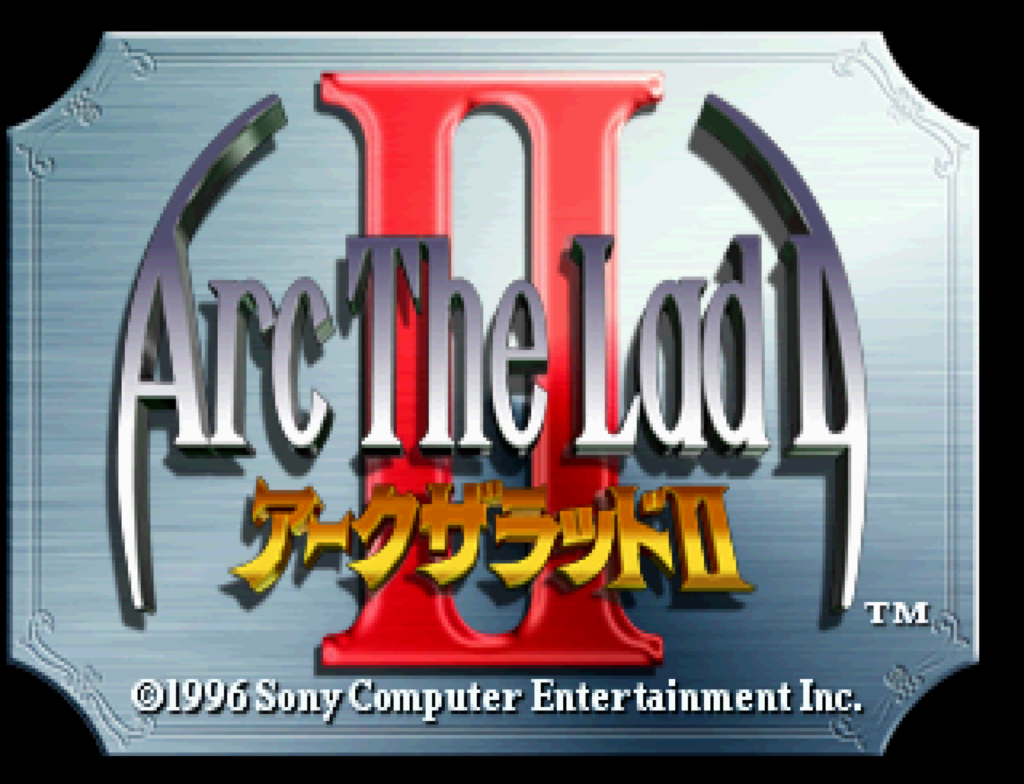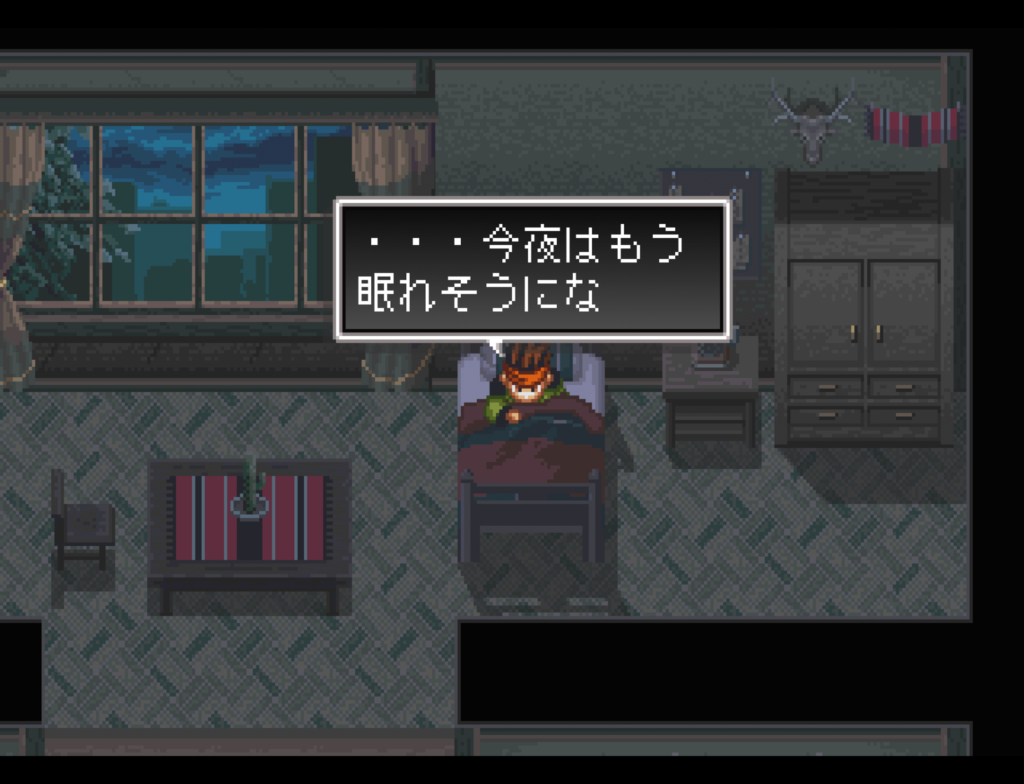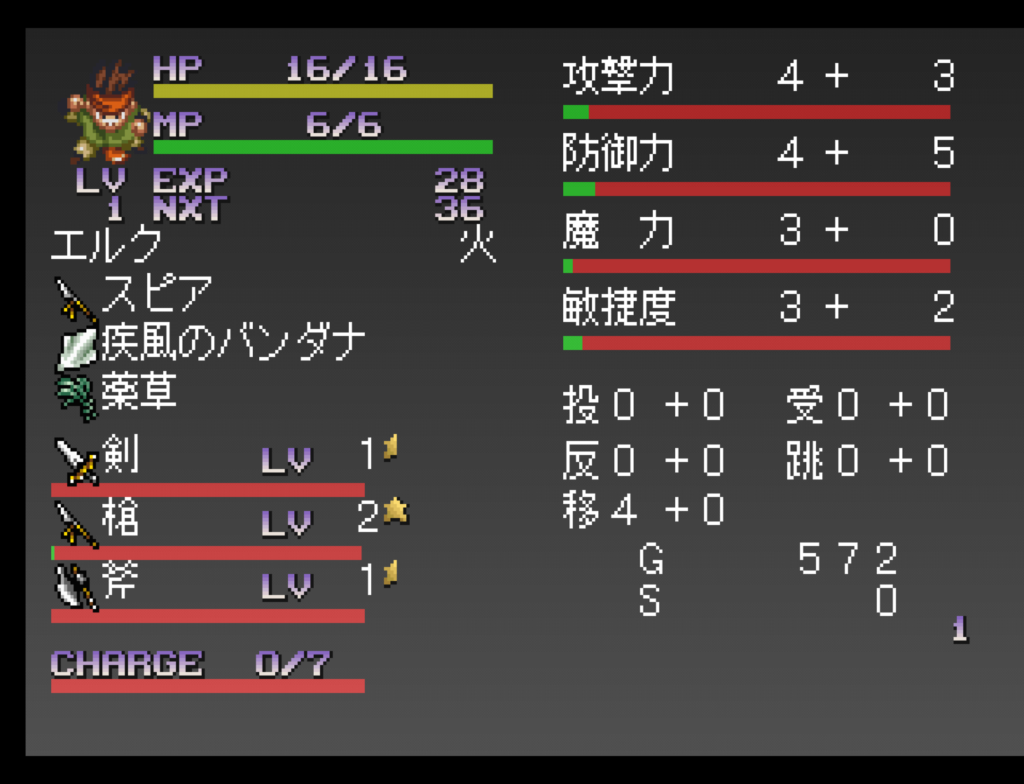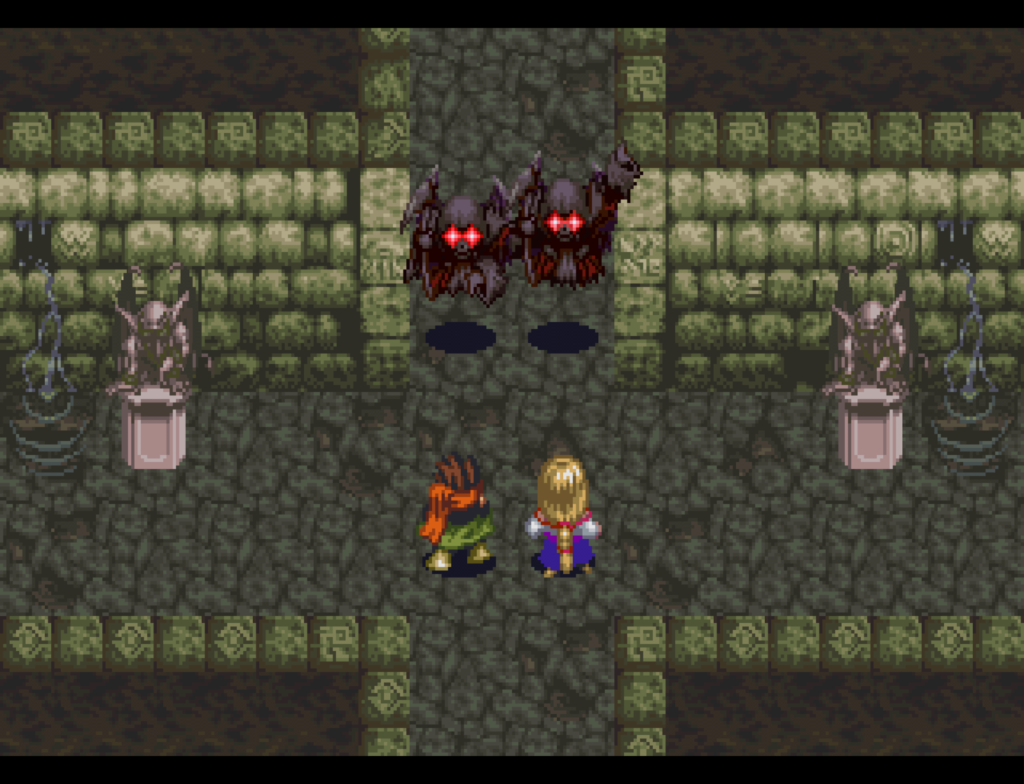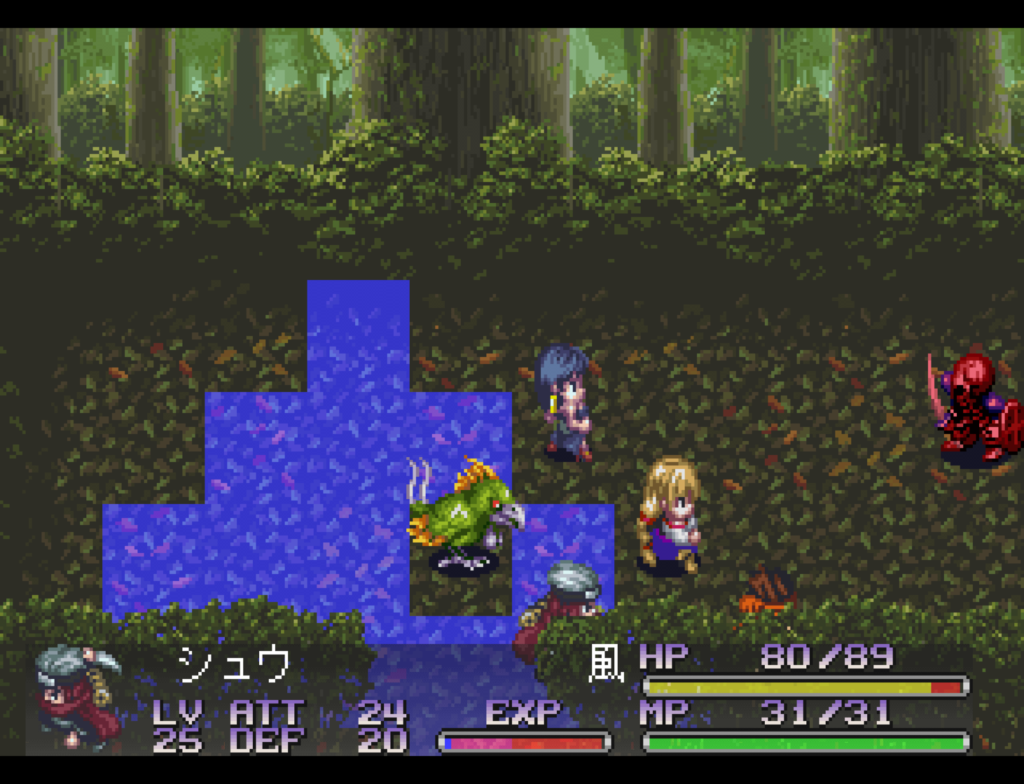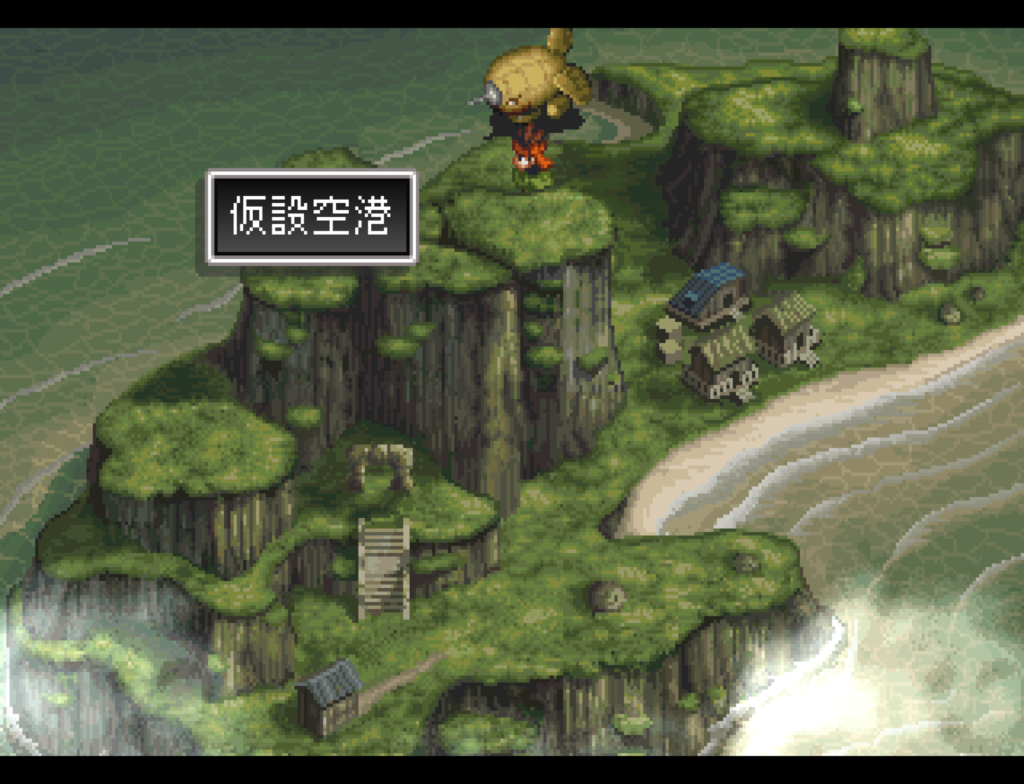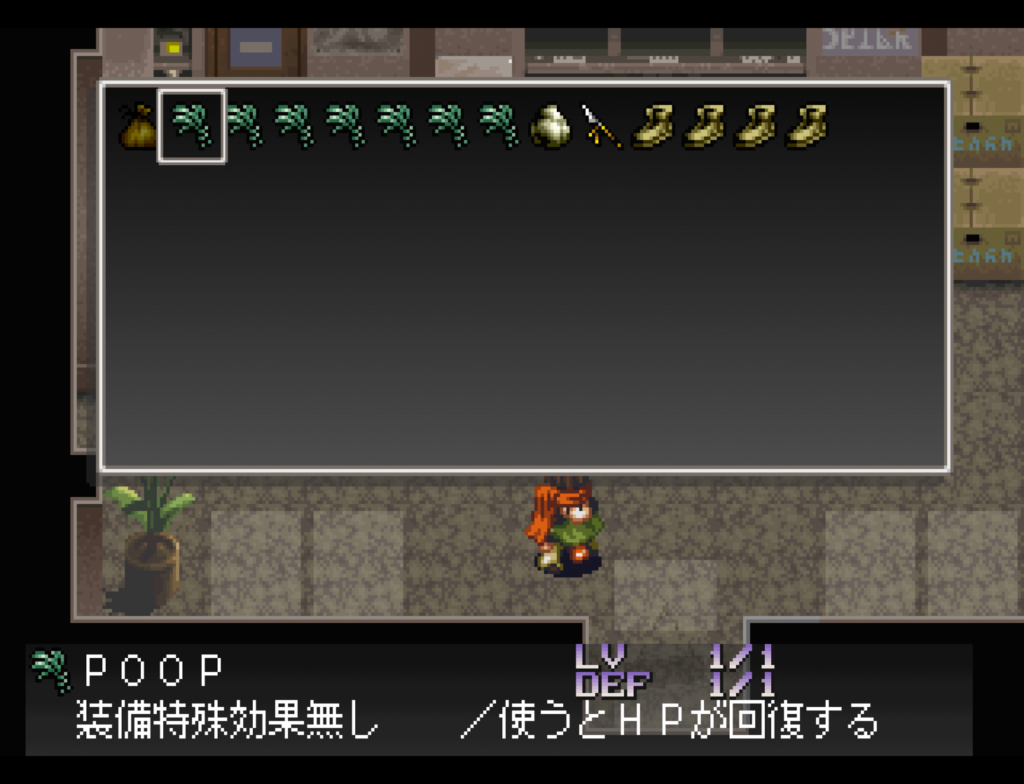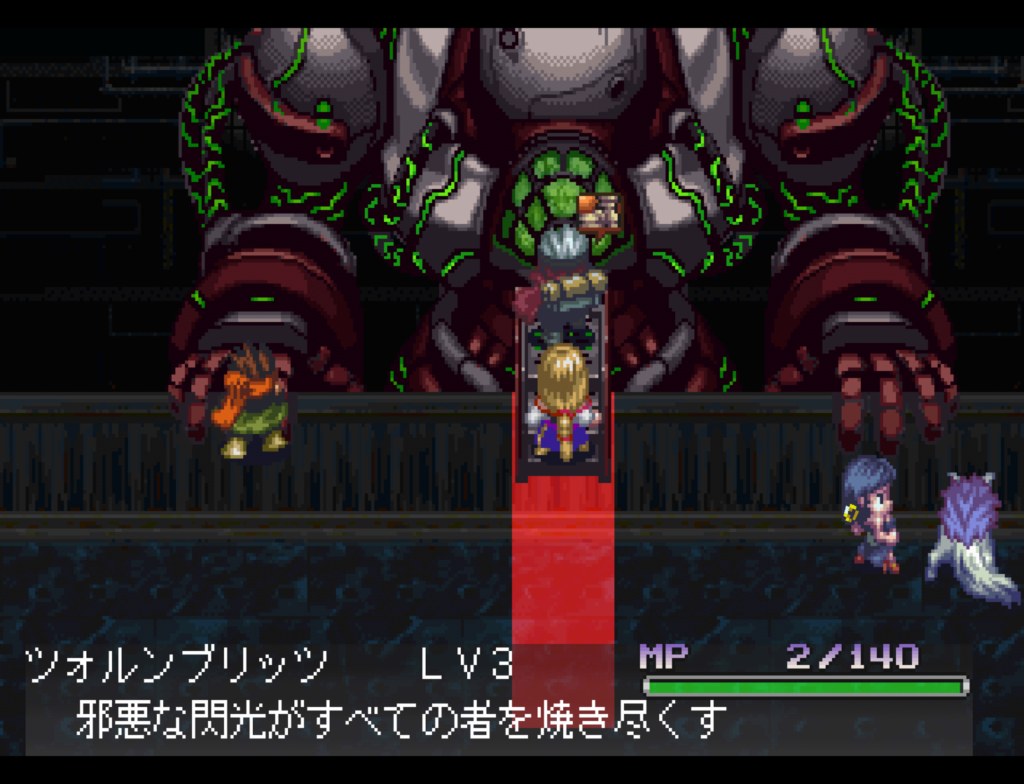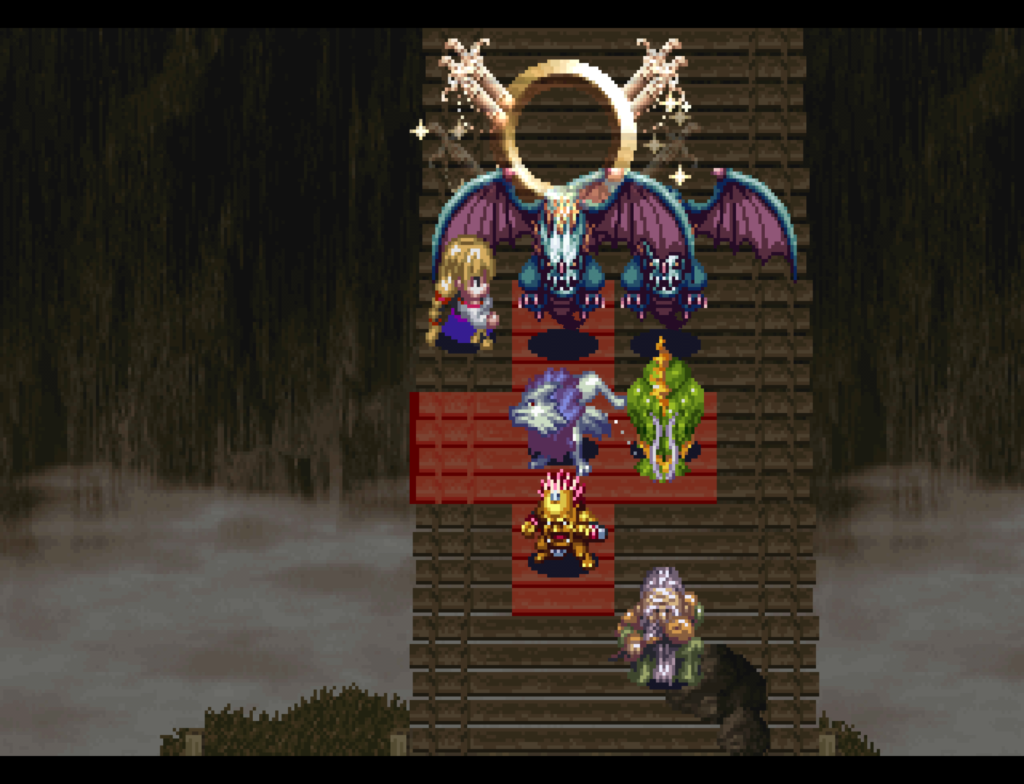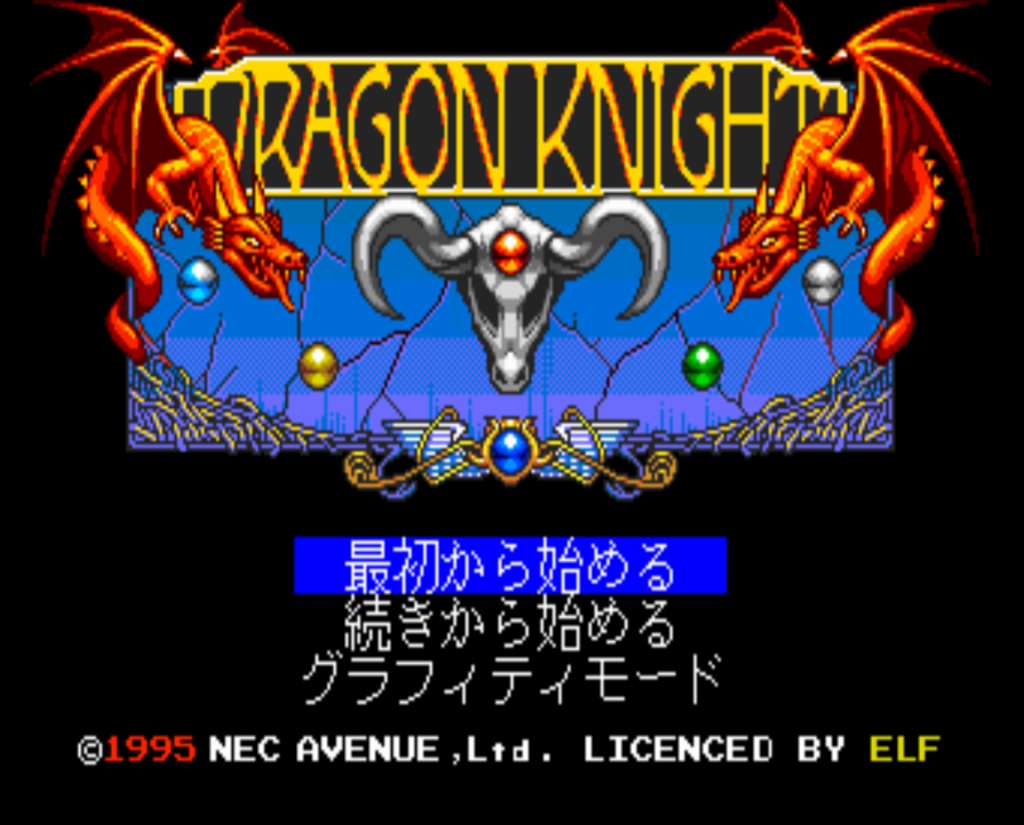
This is yet another game in the Dragon Knight series of eroge. The second and third games had already been released in non-ero ports for the PCE, and they decided to release the first game in 1995. This game was originally released for PCs in 1989, so understandably it’s going to be somewhat outdated by now.
The “graffiti” part of the title refers to the “graffiti mode”, where you can see profiles and pictures of the girls from all three games — you can sort the lists by age, bust size, name, etc. The example is Priscilla from Dragon Knight III (Knights of Xentar).
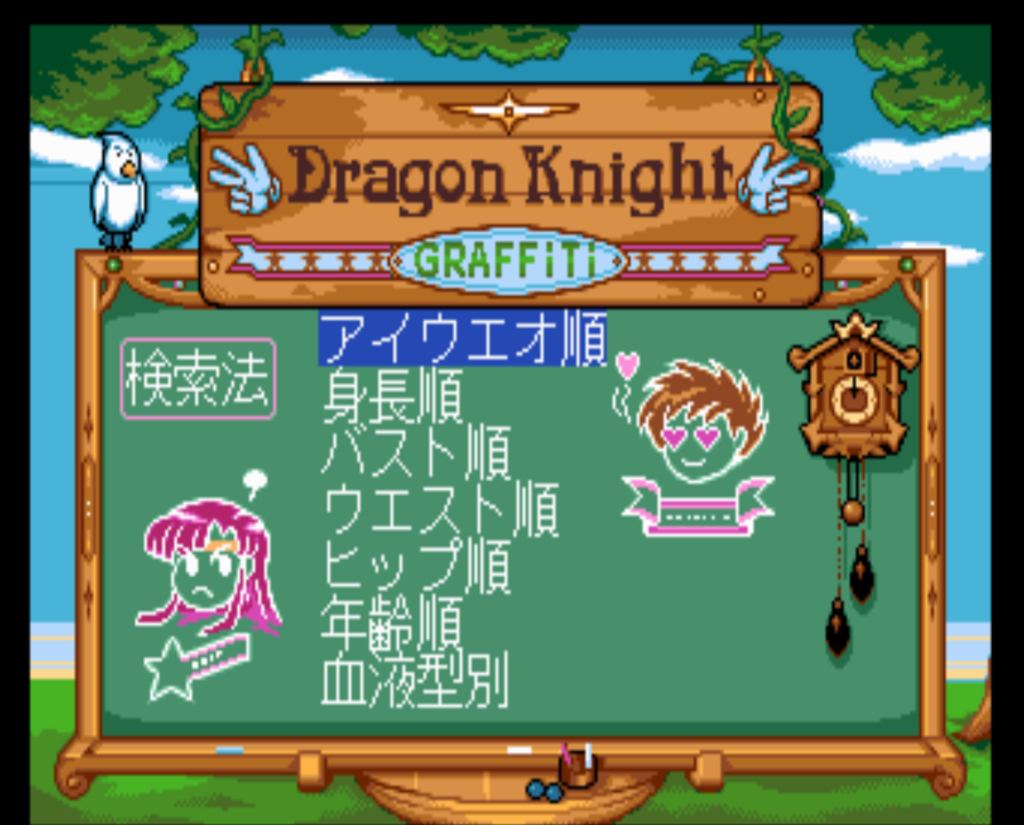
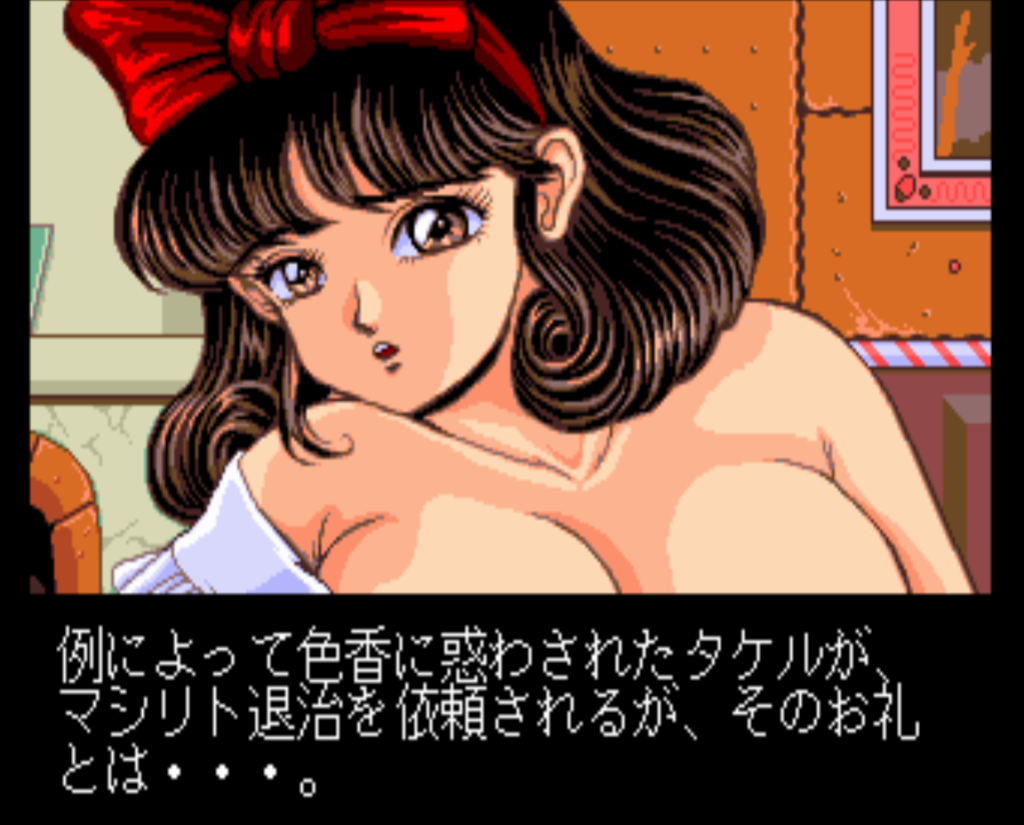
Like the second game, the first one is a dungeon crawler. The hero as usual is Yamato Takeru, a wandering adventurer who happens on the town of Strawberry Fields, where he doesn’t see anyone. It turns out this is a place of only women, which piques Takeru’s interest. A woman named Ann sees that he is a knight prophecied to save them, and leads him to the Queen. It seems that Gabirlban, the head of the Dragon Knights, has taken six jewels that are necessary to revive the goddess Aqualine. Takeru’s goal is to find one gem on each of the six floors of the goddess tower. Everyone seems a bit uneasy about Takeru because he’s so casual and focused on beautiful girls, but he sets out anyway.
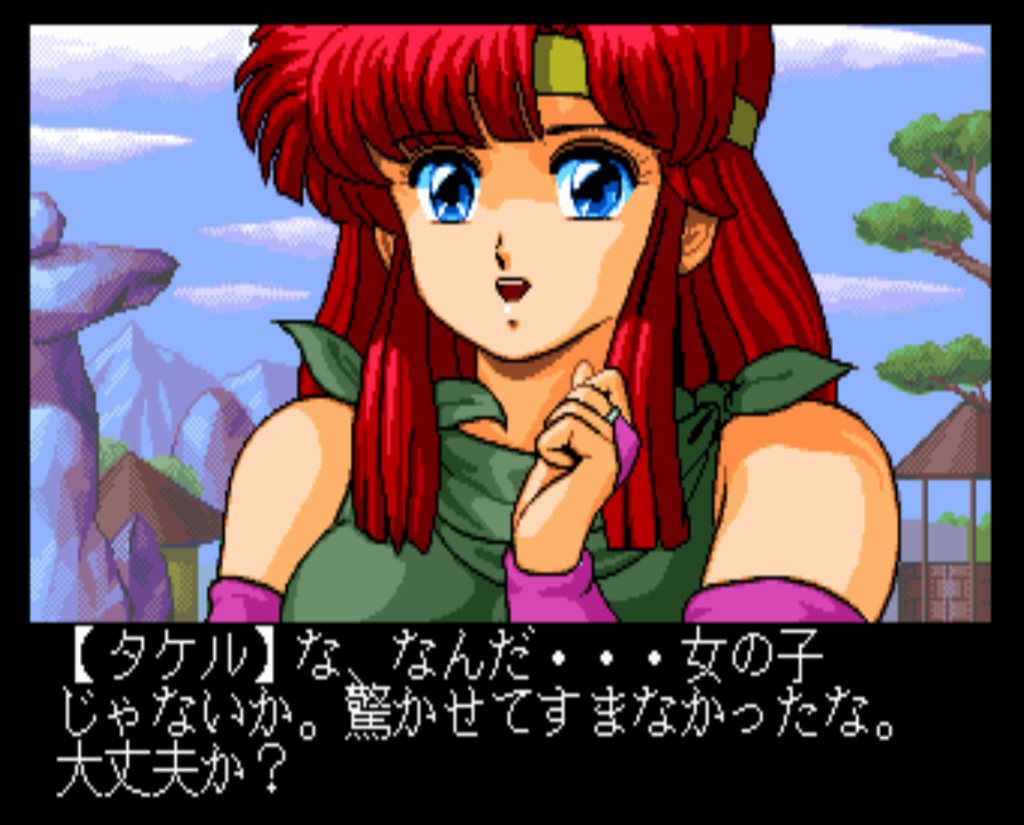
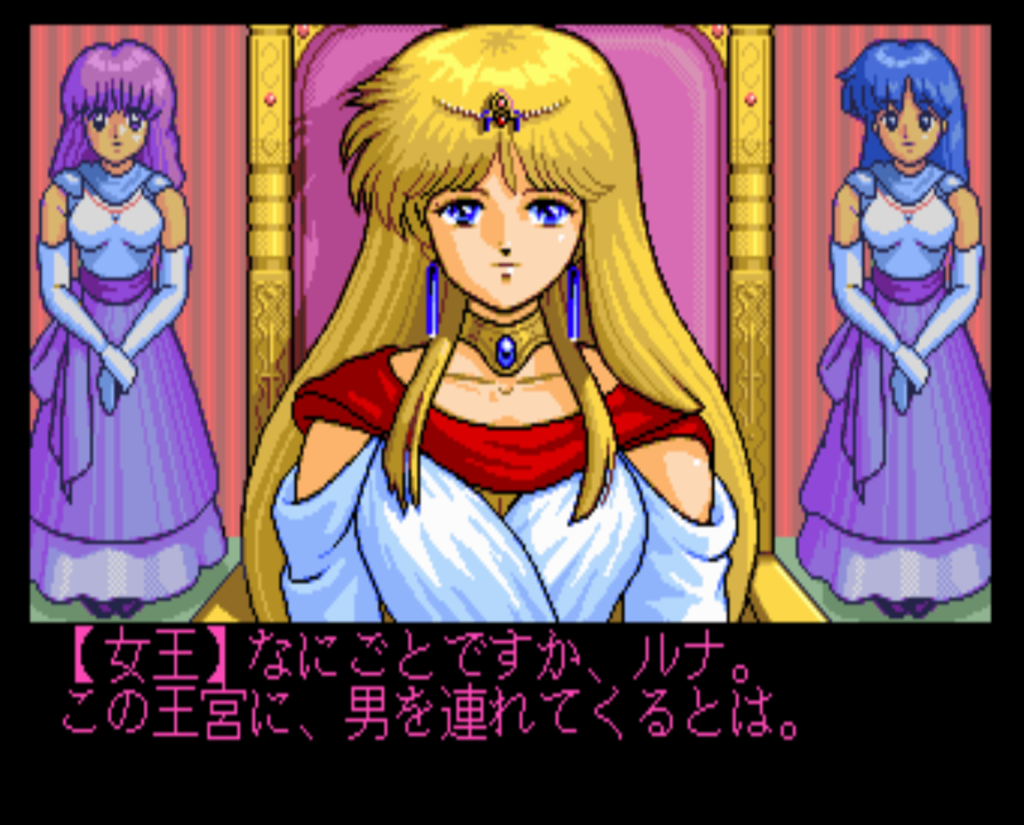
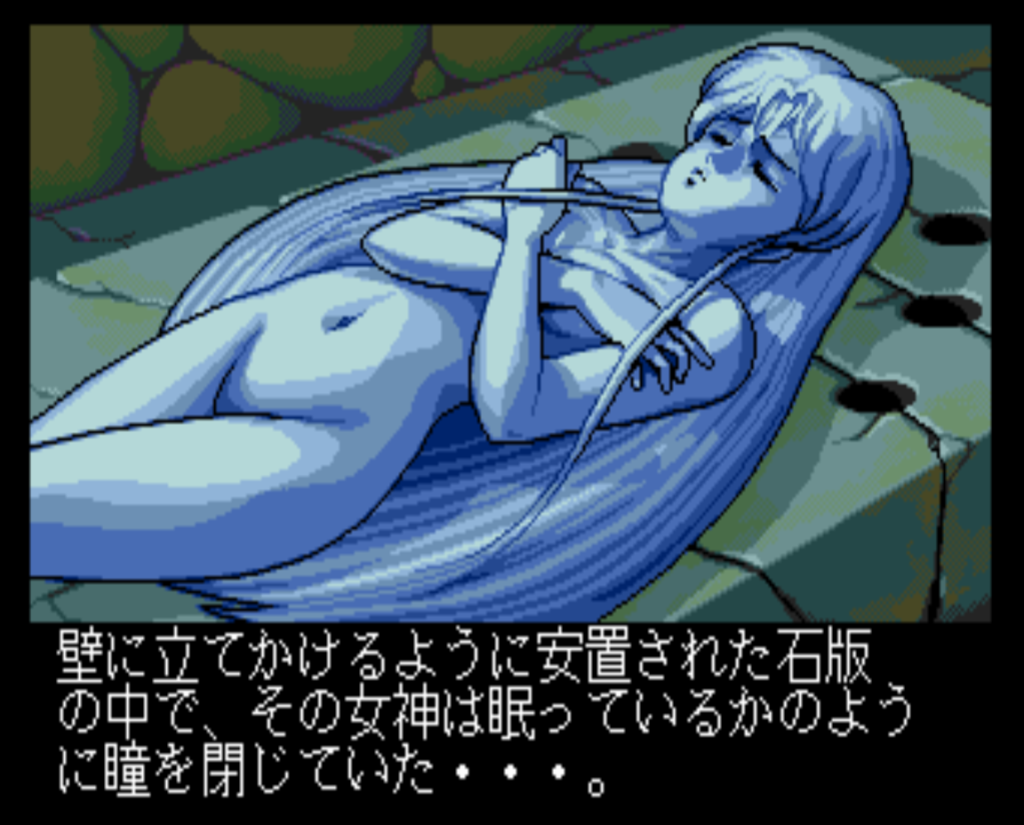
Takeru is given a gem that lets him cast spells — just two spells, a healing spell, and an attack spell that hits all enemies (and can also do some damage to enemies that aren’t hurt much by regular attacks).
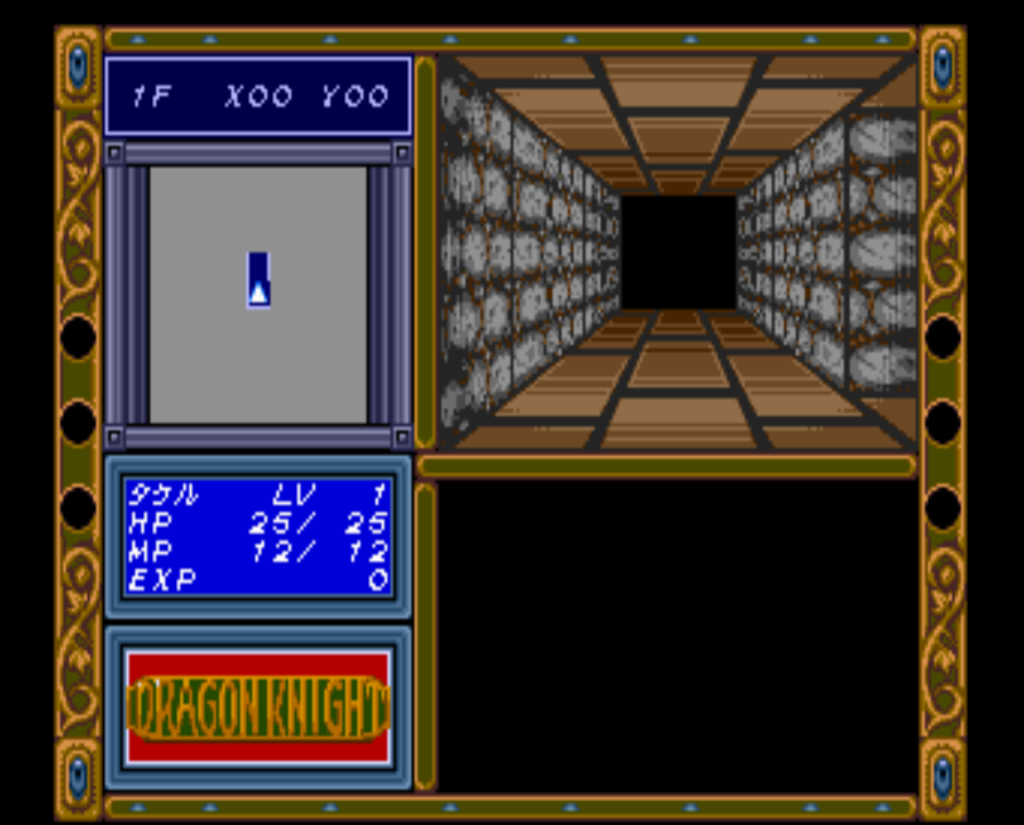
Fortunately there’s an automap, so the game plays smoothly. The balance is what you might expect from a 1989 game, though. At first the enemies are very strong and you can only last 2-3 battles before having to go back to town. Healing and restoring MP costs money, so there’s almost nothing left over for upgrading equipment. The enemies also get stronger as you level. But once I hit level 5, the enemies stopped increasing in strength and it became much easier to explore the level, and by level 6 most of the enemies on the first floor couldn’t even hit me. Then I was able to fully explore the level and upgrade my equipment.
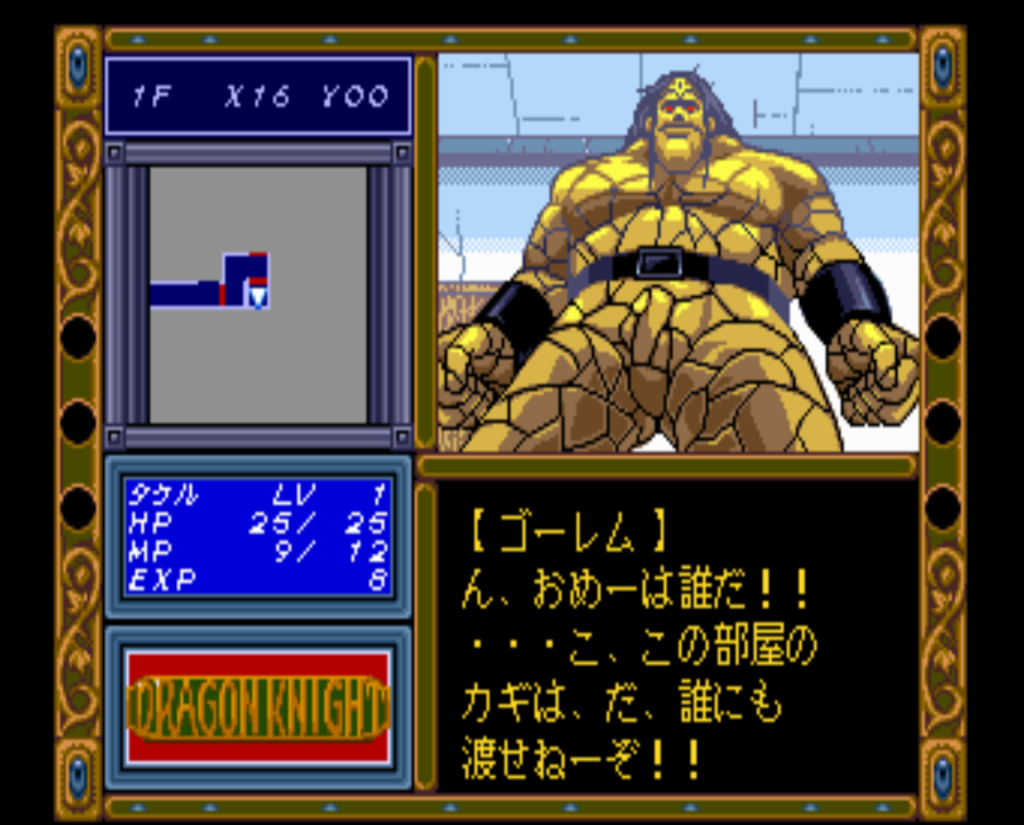
The first task is to remove this golem so you can get a key. The wise woman in town has a potion that puts it to sleep. With the key, we can save one of the warriors who was captured by the enemies. This is where the ero-scenes all come in.
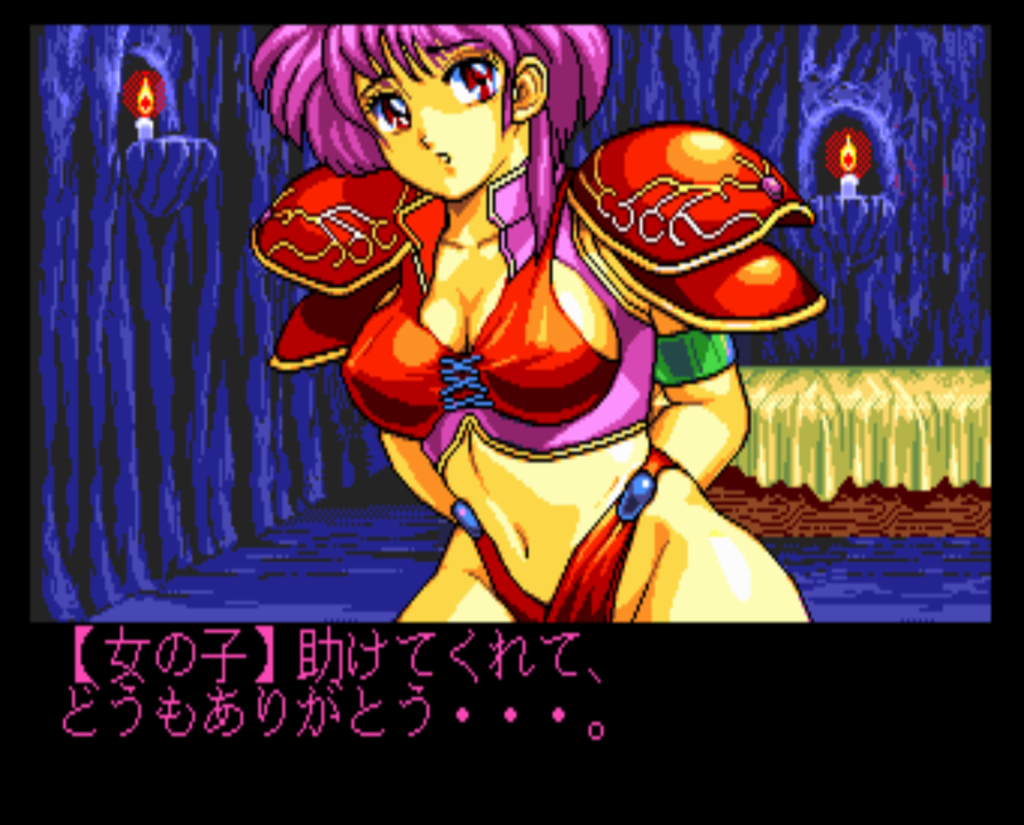
As usual we’re faced with the uncomfortable situation where all of the ero-scenes involve the women tied up, captured, or threatened by enemies. Unlike the other DK games, there is no sex. I found a set of pictures from the PC game and many of them don’t even have nudity; the amount of censoring they had to do for the PCE release was very minimal (for instance, the picture I gave above is exactly the same in the PC version).
Anyway, this girl is guarded by 6 goblins who can’t damage me. She gives Takeru a password to reach the next floor, where there’s another captured girl.
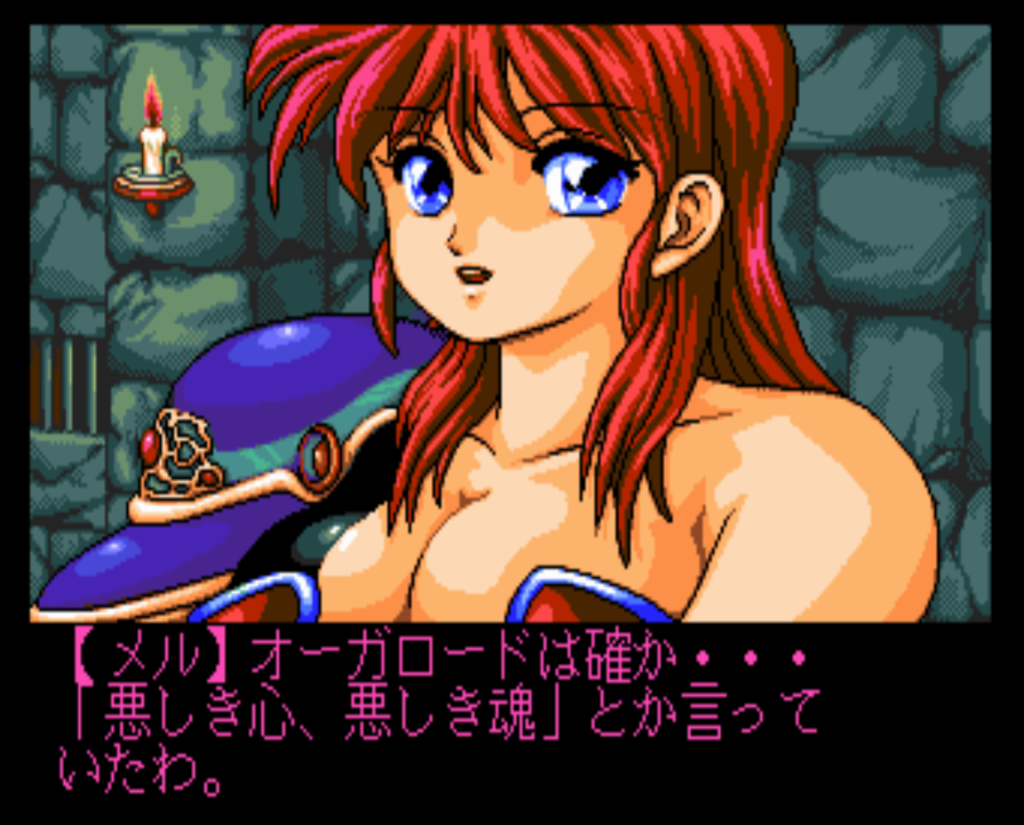
She joins the party; you can have one other person with you (this is an addition in the PCE game). She also gives a further password that will let us reach the first of the Dragon Knights, on the first floor.
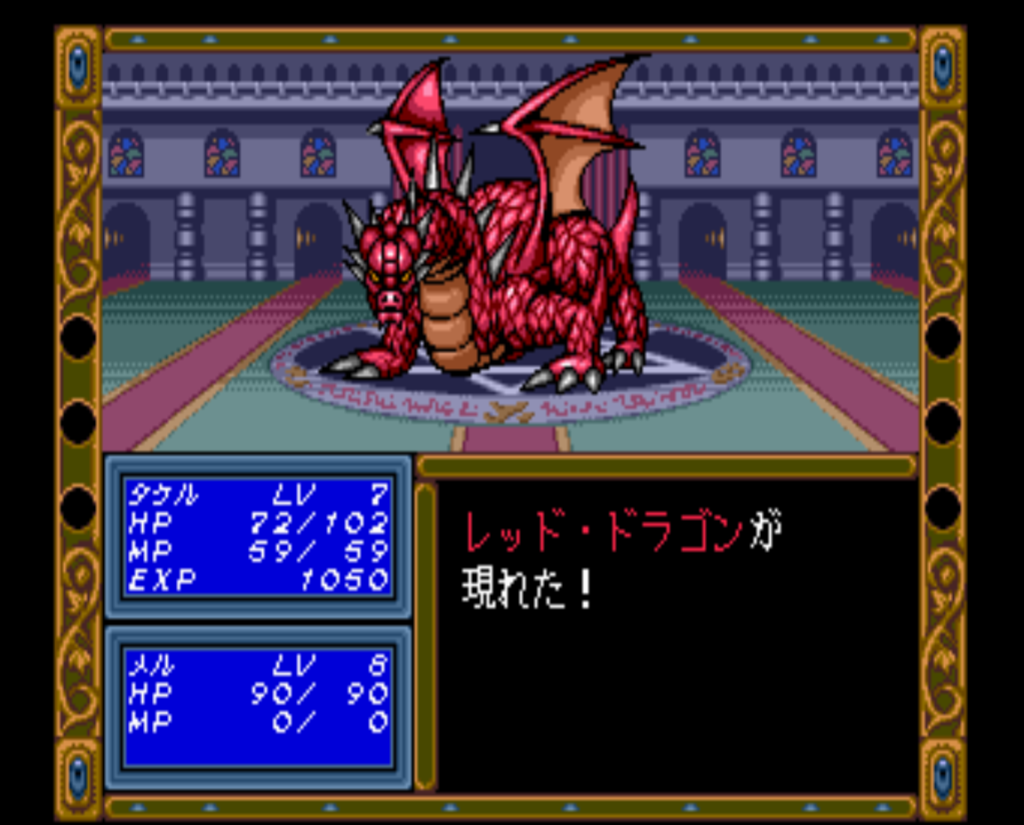
At level 7, the boss could barely hurt me but had a large HP pool. I just healed once and it was no problem. Takeru then recovers the first of the gems.
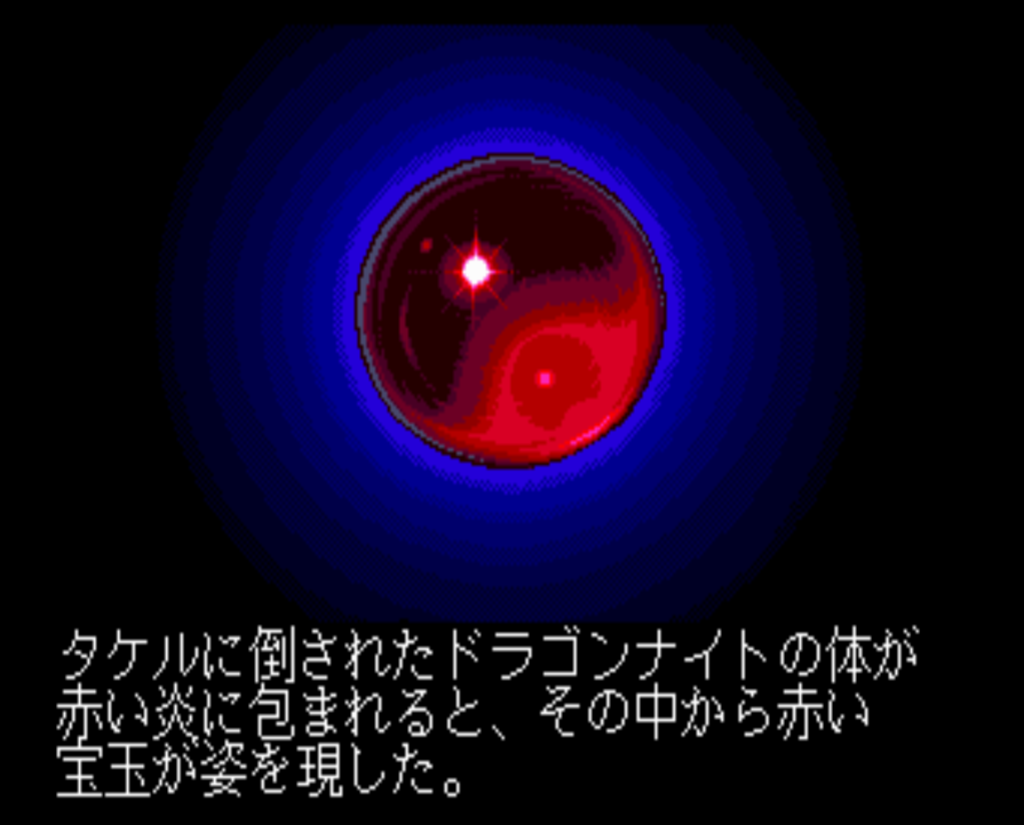
We’re now ready to tackle level 2. But even at level 8, the enemies here were so strong that I could barely survive one battle. It seems like the balance continues from the way it worked on the first floor, and I would probably have to do some more grinding on level 1 before I could proceed. But I thought that was a good place to stop.
On the whole this is not a terrible game as long as you’re wiling to put up with the 1989 balance issues. The floors have a bit more interest than some of the empty dungeons from this era. The conversation scenes are all voiced, with some amusing dialogue. The creep factor of the tied-up women is hard to ignore, though.
That’s the last game in the first block of 1995, so in a few days I’ll have a post with the lineup of games for the next three months.
Happy new year!
